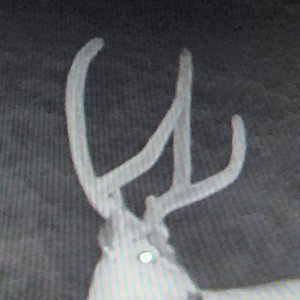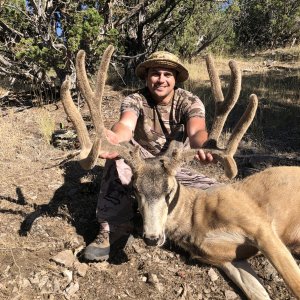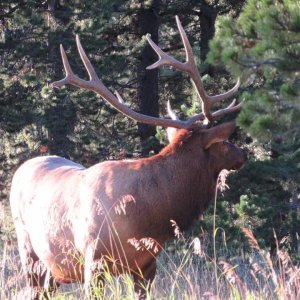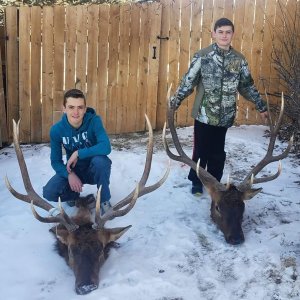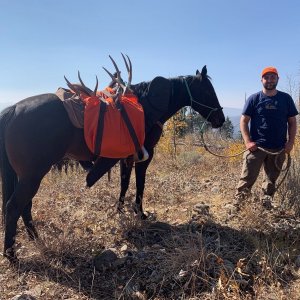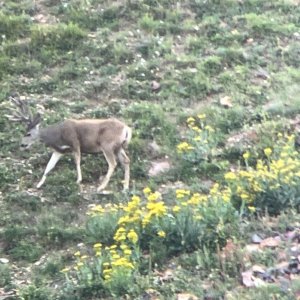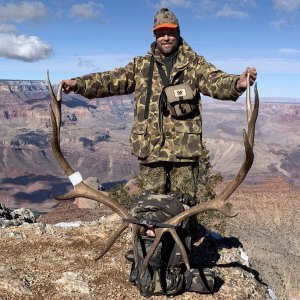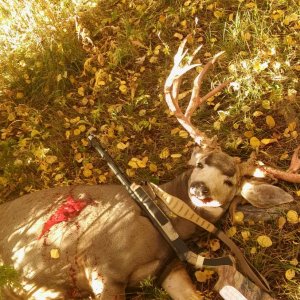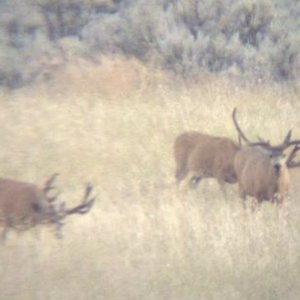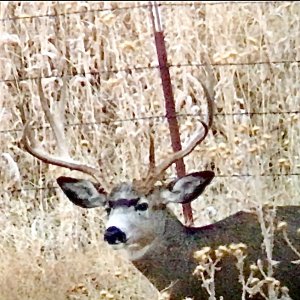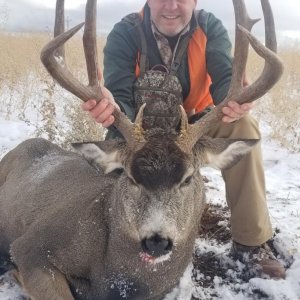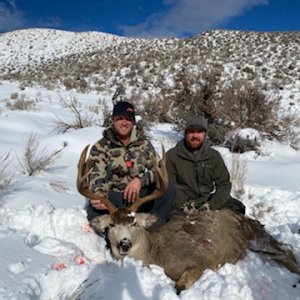feddoc
Long Time Member
- Messages
- 7,222
http://www.rgj.com/article/20120402/NEWS/304020022/Sleuthing-savvy-nabs-elk-poachers?odyssey=mod|newswell|text|FRONTPAGE|s
Larry and Marty Hall had two massive bull elk sighted in their rifle scopes. A cracking boom from one gun, then another, echoed across the rugged landscape along the Nevada-Idaho line.
One animal, crowned with a majestic six-by-six antler rack, was dead. The other, a six-by-four, was mortally wounded but alive.
Neither Larry nor his son, Marty, had a tag to hunt elk.
But Larry?s longtime buddy, Frank Koski, did. Koski took back his rifle from Larry and finished off the wounded bull. The trio and Frank?s two sons, John and Andrew, then hauled out the now-tagged animal with an ATV, leaving the other to rot.
Across the way, other hunters had been scouting the same elk that day. They knew what they witnessed on Nov. 6, 2010 wasn?t right.
So began a yearlong poaching investigation that involved agencies from three states, sophisticated DNA analysis on frozen meat in household freezers and blood splotches lifted from an ATV tire thousands of miles from the crime scene.
Old fashion gumshoe and a black lab with a fine-tuned nose helped seal the case.
?It's the same as a homicide investigation,? said Rob Buonamici, law enforcement chief for the Nevada Department of Wildlife. ?We have to literally prove the same elements as a homicide. Except we can't go to the mountain and talk to the elk that are left and ask them who did it.?
Over the past three decades or so, poachers have become more technologically advanced ? using night vision goggles, trail cameras, satellite mapping and two-way radios, among other tools. That means wardens have had to evolve as well, finding ever new and creative ways of sleuthing.
These days, DNA is just as critical in animal crime investigations as it is solving human crimes.
Buonamici predicted in the not-to-distant future, DNA will allow biologist to pinpoint the region an animal came from and nab hunters who have a tag for one area but kill their bounty in another.
In the Nevada case, game wardens took blood and tissue samples from the scene and the carcass left behind. From witness accounts, investigators were able to identify the five suspects after searching through the state hunting tag database.
?One person saw Marty Hall coming out of the trees, and when he got on a four-wheeler he didn't have a rifle anymore,? said Fred Esparza, NDOW game warden and lead investigator.
That December, search warrants were issued for five different homes, four in Nevada and Larry Hall?s home in Franktown, Colo., a small community south of Denver. Samples were taken from frozen meat in freezers, and Colorado wildlife officers lifted a blood sample from an ATV tire.
But it would be another six months before investigators found the missing gun used to shoot the big elk that was left to rot. That break came with the help of a four-legged officer named Pepper, trained to sniff out weapon odors like gun oil and gun powder.
Owned and handled by Jim Stirling, of the Idaho Department of Fish and Game, the elk caper was one of Pepper?s first assignments.
On June 10, 2011, the sharp-nosed dog found the weapon during the spring thaw, hidden under sagebrush.
?This gun was buried under feet of snow for six months before I was even able to get access to this area,? Esparza said.
Larry and Marty Hall had two massive bull elk sighted in their rifle scopes. A cracking boom from one gun, then another, echoed across the rugged landscape along the Nevada-Idaho line.
One animal, crowned with a majestic six-by-six antler rack, was dead. The other, a six-by-four, was mortally wounded but alive.
Neither Larry nor his son, Marty, had a tag to hunt elk.
But Larry?s longtime buddy, Frank Koski, did. Koski took back his rifle from Larry and finished off the wounded bull. The trio and Frank?s two sons, John and Andrew, then hauled out the now-tagged animal with an ATV, leaving the other to rot.
Across the way, other hunters had been scouting the same elk that day. They knew what they witnessed on Nov. 6, 2010 wasn?t right.
So began a yearlong poaching investigation that involved agencies from three states, sophisticated DNA analysis on frozen meat in household freezers and blood splotches lifted from an ATV tire thousands of miles from the crime scene.
Old fashion gumshoe and a black lab with a fine-tuned nose helped seal the case.
?It's the same as a homicide investigation,? said Rob Buonamici, law enforcement chief for the Nevada Department of Wildlife. ?We have to literally prove the same elements as a homicide. Except we can't go to the mountain and talk to the elk that are left and ask them who did it.?
Over the past three decades or so, poachers have become more technologically advanced ? using night vision goggles, trail cameras, satellite mapping and two-way radios, among other tools. That means wardens have had to evolve as well, finding ever new and creative ways of sleuthing.
These days, DNA is just as critical in animal crime investigations as it is solving human crimes.
Buonamici predicted in the not-to-distant future, DNA will allow biologist to pinpoint the region an animal came from and nab hunters who have a tag for one area but kill their bounty in another.
In the Nevada case, game wardens took blood and tissue samples from the scene and the carcass left behind. From witness accounts, investigators were able to identify the five suspects after searching through the state hunting tag database.
?One person saw Marty Hall coming out of the trees, and when he got on a four-wheeler he didn't have a rifle anymore,? said Fred Esparza, NDOW game warden and lead investigator.
That December, search warrants were issued for five different homes, four in Nevada and Larry Hall?s home in Franktown, Colo., a small community south of Denver. Samples were taken from frozen meat in freezers, and Colorado wildlife officers lifted a blood sample from an ATV tire.
But it would be another six months before investigators found the missing gun used to shoot the big elk that was left to rot. That break came with the help of a four-legged officer named Pepper, trained to sniff out weapon odors like gun oil and gun powder.
Owned and handled by Jim Stirling, of the Idaho Department of Fish and Game, the elk caper was one of Pepper?s first assignments.
On June 10, 2011, the sharp-nosed dog found the weapon during the spring thaw, hidden under sagebrush.
?This gun was buried under feet of snow for six months before I was even able to get access to this area,? Esparza said.

